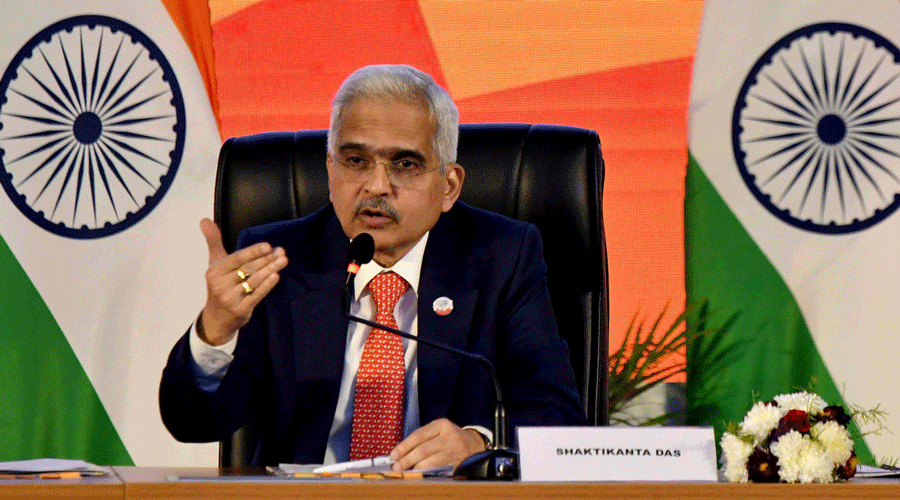The Reserve Bank of India (RBI) has advised banks to build their capital buffers ahead of an acutely anticipated spell of global financial instability.
RBI governor Shaktikanta Das said the central bank will also review banks’ business models — a cautionary comment suggesting the Indian banking industry may yet face some headwinds, despite its resilience.
“To be financially resilient, a bank should have adequate capital buffers and be able to generate earnings even in times of macroeconomic shocks. It should also have adequate liquidity to meet its financial obligations in various situations. Therefore, financial resilience is closely linked to a bank’s business model and strategy,” Das said at a global conference on financial resilience organised by the College of Supervisors in Mumbai on Thursday.
“The Reserve Bank of India has therefore started looking at the business models of banks more closely. Aspects and deficiencies in the business model can spark a crisis in due course,” said Das, adding the RBI has nudged the banks to build capital buffers in times of plenty.
“The recent events in the banking landscape of the US and Europe suggest that risks for an individual bank could crop up from segments of its balance sheet which might have been considered relatively safer. Hence, we expect the management and board of directors of each bank tocontinually assess the financial risks and focus on building up adequate capital and liquidity buffers even beyond the regulatory minimumfor continued resilience and sustainable growth.”
Senior bankers told The Telegraph the governor’s observations may be taken more as a cautionary foresight rather than a cause for concern as scheduled commercial banks in India are complying with the capital adequacy requirement as per Basel norms.
The move by the regulator to assess the business model of banks is a likely outcome, given the credit growth scenario.
“The Basel norms and regulators prescribe risk weights for asset classes and corresponding credit ratings based on which banks calculate the regulatory capital requirement as a share of risk-weighted assets. The risk weights for AAA or AA rated corporates is less than that of say BBB or BB,” said a senior director of a public sector bank.
“With credit demand rising, the regulator wants the banks to broaden base their exposure and avoid a rerun of Prompt Corrective Action. So there is a nudge to the banks not just to shore up their capital base but also to make provisions on stressed assets.”
“Also, with the advent of fintech companies, there has been a significant disruption in areas of banking such as payments and cross-selling of investment products.”
“Banks are looking at partnerships but their margins are thinning out as more players come in the market. So, there is also a need for the banks and the regulators to rethink the business model,” the director said.
US growth slips
Washington: The US economy slowed sharply from January through March, decelerating to just a 1.1 per cent annual GDP growth as higher interest rates hammered the housing market and businesses reduced their inventories.
Thursday’s estimate showed that the nation’s gross domestic product weakened after growing 3.2 per cent from July through September and 2.6 per cent from October through December.
But consumer spending, remained resilient, growing at a 3.7 per cent annual pace, the fastest such rate in nearly two years. Spending on goods, in particular, was solid: It rose at its fastest pace since the second quarter of 2021.
Economists had been expecting overall GDP to grow at a 1.9 per cent pace in the January-March quarter. Behind much of the quarter’s slowdown was a sharp reduction in business inventories.
AP











